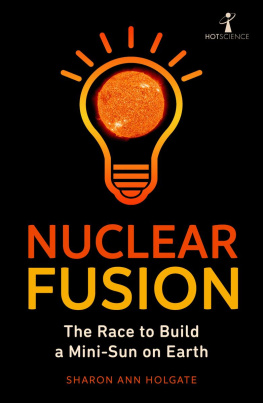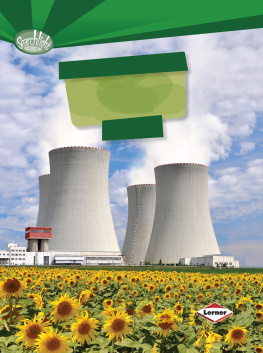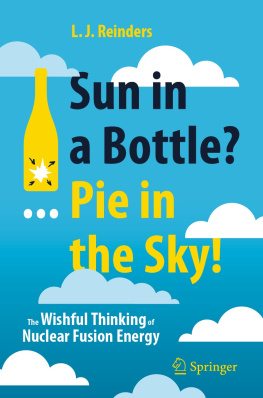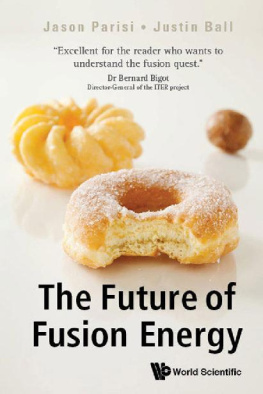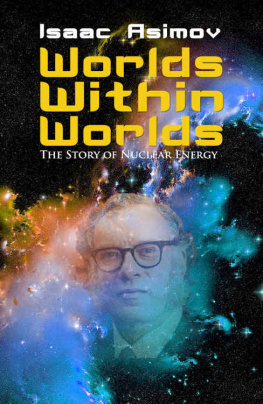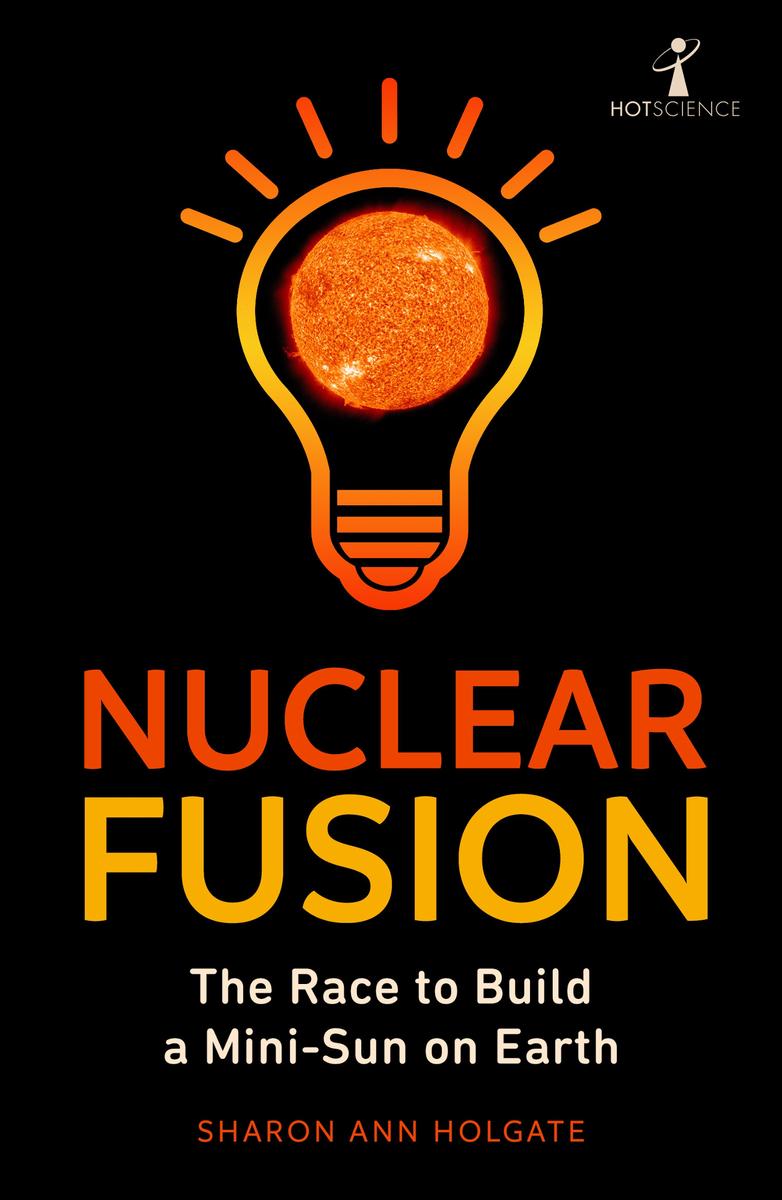Sharon Ann Holgate is a freelance science writer and broadcaster with a doctorate in physics. She has written for newspapers and magazines, including Science, New Scientist and The Times Higher Education Supplement, and has presented on BBC Radio 4 and the BBC World Service. She was co-author of The Way Science Works (Dorling Kindersley, 2002), a childrens popular science book shortlisted for the 2003 Junior Prize in the Aventis Prizes for Science Books, and recently completed the second edition of her undergraduate textbook Understanding Solid State Physics (CRC Press, 2021). She has also written the Outside the Research Lab textbook series (IOP Publishing in conjunction with Morgan & Claypool Publishers) and contributed to the popular science books 30-Second Quantum Theory (Icon, 2014) and 30-Second Energy (Ivy Press, 2018). In 2006, Sharon Ann won Young Professional Physicist of the Year for her work communicating physics. You can follow Sharon Ann on Instagram @everydaysciencethings
My thanks go firstly to series editor Brian Clegg, who I rather fittingly first discussed the possibility of this book with on the summer solstice, as well as the team at Icon Books, including Duncan Heath, James Lilford and Robert Sharman. I would also like to thank the numerous press officers, scientists and engineers who have given me many invaluable insights into the world of fusion energy and provided me with great support throughout this project. These include Laban Coblentz, Michael Loughlin and Mario Merola from ITER, Rob Buckingham, Chris Dorn, Nick Holloway and Nick Walkden from the UKAEA, Si-Woo Yoon from the KSTAR programme, Doug Parr from Greenpeace, Breanna Bishop from the LLNL, Daniel Alcazar and Alan Carr from LANL, Neal Singer and Dan Sinars from Sandia National Laboratories, Beate Kemnitz and Thomas Klinger from the Max Planck Institute for Plasma Physics, Mike Forrest, Randall Volberg from Type One Energy, Christos Stavrou of Fusion Reactors Ltd, Britta Weddeling and Jannik Reigl from Marvel Fusion, Tanner Horne from Horne Technologies, viii Chris Ajemian, Scott Brennan and Derek Sutherland from CTFusion, Simon Redfern of Motive PR, Richard Dinan of Pulsar Fusion, Abbey Goodman of TAE Technologies, Jessie Barton from Helion Energy, Stephen Hasley-Mead from Tokamak Energy, Eric Lerner and Ivy Karamitsos from LPPFusion, Jan Kirchhoff and Warren McKenzie from HB11 Energy, Danielle Johnson from General Fusion and Chris J. Faranetta from NearStar Fusion.
Finally, I would like to thank friends and family who have helped in various ways with this book, including David Culpeck, Andrew Fisher, Paul Parsons and my mother Joan.
From the earliest times, the Sun has held a fascination for us. Some early civilisations went as far as worshipping Sun gods such as the Ancient Greek god Helios, who was believed to drive a chariot across the sky every day, while the Ancient Romans worshipped the Sun itself. Scientific study of the Sun also dates back centuries, with the Italian scholar Galileo Galilei one of the first to observe sunspots in 1610 using something invented just a couple of years before a telescope. We are now in an era where there is a different type of focus on the Sun. For the past few decades, we have been striving to harness the same physical process that creates the Suns energy nuclear fusion. The aim is to provide our planet with a much-needed clean energy source and help meet global carbon reduction targets.
Of course, we are already harnessing solar energy for power generation via the familiar technology of solar cells. These provide a valuable renewable energy source, and scientists are currently working on developing a new generation of these useful devices. The intention is to create solar cells that generate more power, last longer, work in duller light and use light from a broader range of the Suns spectrum. By contrast, in a fusion reactor we wouldnt be using the Suns own energy to generate power. Instead, scientists and engineers are attempting to create what essentially amounts to a mini-Sun down here on Earth that operates at staggeringly high temperatures of around 150 million degrees Celsius (270 million degrees Fahrenheit).
This Sun-in-miniature would give out its own power via the nuclear fusion process. But we would not use its power directly. Instead, just as in current nuclear power stations, the heat generated by the nuclear reaction would be used to boil water, creating steam that drives turbines, which in turn produce electricity.
There are several features of fusion energy that make its use for electricity generation a very attractive prospect. Firstly, it is a clean energy source, emitting no greenhouse gases. Secondly, it could provide almost limitless quantities of power. It is also much safer than nuclear fission which is the process that existing nuclear power stations use to generate electricity and it creates no long-lived radioactive waste, which is currently a costly and problematic by-product of nuclear power generation. In addition, fusion power would enable countries to meet their own energy needs rather than importing either the raw materials to generate electricity or the power itself. In short, the development of fusion power plants would revolutionise global energy generation.
With the 2021 Intergovernmental Panel on Climate Change (IPCC) report stating that scientists are observing changes in the Earths climate in every region of the planet, work towards new, clean energy sources seems more important, and more pressing, than ever. According to the report, Many of the changes observed in the climate are unprecedented in thousands, if not hundreds of thousands of years. But it also says that strong and sustained reductions in emissions of carbon dioxide (CO2) and other greenhouse gases would limit climate change. So, there is still a chance to alter course, and many countries already have targets in place to cut the harmful emissions driving these unwanted changes to our planet. Fusion power plants could provide a powerful ally in reaching the ambitious emission reduction targets required.
Equally ambitious are the fusion experiments under way that may lead to this hoped-for new generation of power plants. The largest of these is the ITER (the way in Latin) experimental reactor being built in Cadarache in southern France. This has 35 nations pooling funding and scientific expertise including the 27 member states of the European Union plus Switzerland and the UK, China, India, Japan, South Korea, Russia and the United States. ITER will never generate electricity, but it aims to demonstrate all the scientific and technical steps required to build commercial fusion energy power plants.
While ITER is by far the biggest of the multinational projects attempting to harness nuclear fusion for electricity generation, it is by no means the only contender in the race. Many countries have, or have had, their own research reactors. These include the Joint European Torus (JET) at the Culham Centre for Fusion Energy in the UK, which was first fired up in 1983, the now decommissioned Tokamak Fusion Test Reactor (TFTR) in the United States, which broke several records during its fifteen-year lifespan, the Chinese Fusion Engineering Test Reactor, which was powered up in December 2020, and the Korea Superconducting Tokamak Advanced Research (KSTAR) project. KSTAR is a pilot device for ITER and, as we will see later when we look in more depth at these projects, set a new world record in November 2020 for one of the key stages in fusion reactor development.

